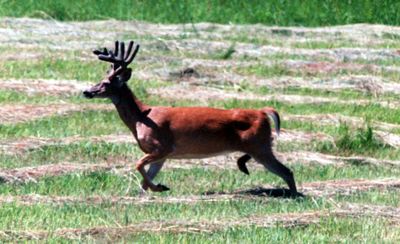Winter dealt blow to some whitetail areas
Pend Oreille hardest hit; southeast OK

The region’s recent tough winter reduced the number of whitetails in much of northeastern Washington, with the most noticeable impact in Pend Oreille County, state Fish and Wildlife Department biologists say.
The winterkill was not as severe in most of Stevens and Ferry counties, but deer ratios were down around a disappointing 27 bucks per hundred does this summer.
Wildlife managers anticipated the winter toll and cut back on antlerless deer permits offered for this fall in the northeast corner of the state.
“It looks as though that was the right move to make,” said Kevin Robinette, regional wildlife manager.
No winter dieoffs were detected in southeastern Washington. Biologists say whitetail populations are in good shape, although southeast units are more restricted with a shorter general-season, three-point antler restrictions and permits required for late buck hunting.
Hunting should be decent in northeastern Washington, but it’s not likely to be a banner year unless perfect hunting weather develops, said Dana Base, department wildlife biologist in Colville.
Mule deer seem to be fairing better than whitetails, he said, notably in Ferry County.
In Okanogan County, a recent decline in fawn survival should start showing up in the buck harvest this year, said Matt Monda, regional wildlife manager in Ephrata.
“It’s not enough to change anybody’s plans, but numbers are lower,” he said.
The most coveted permit hunts in the Columbia Basin are the Desert unit and the late buck hunts in Chelan County.
“Those hunts have a well-deserved reputation for producing some very nice mule deer bucks,” Monda said.
“The Chelan late hunts are as good as it gets in Washington.”